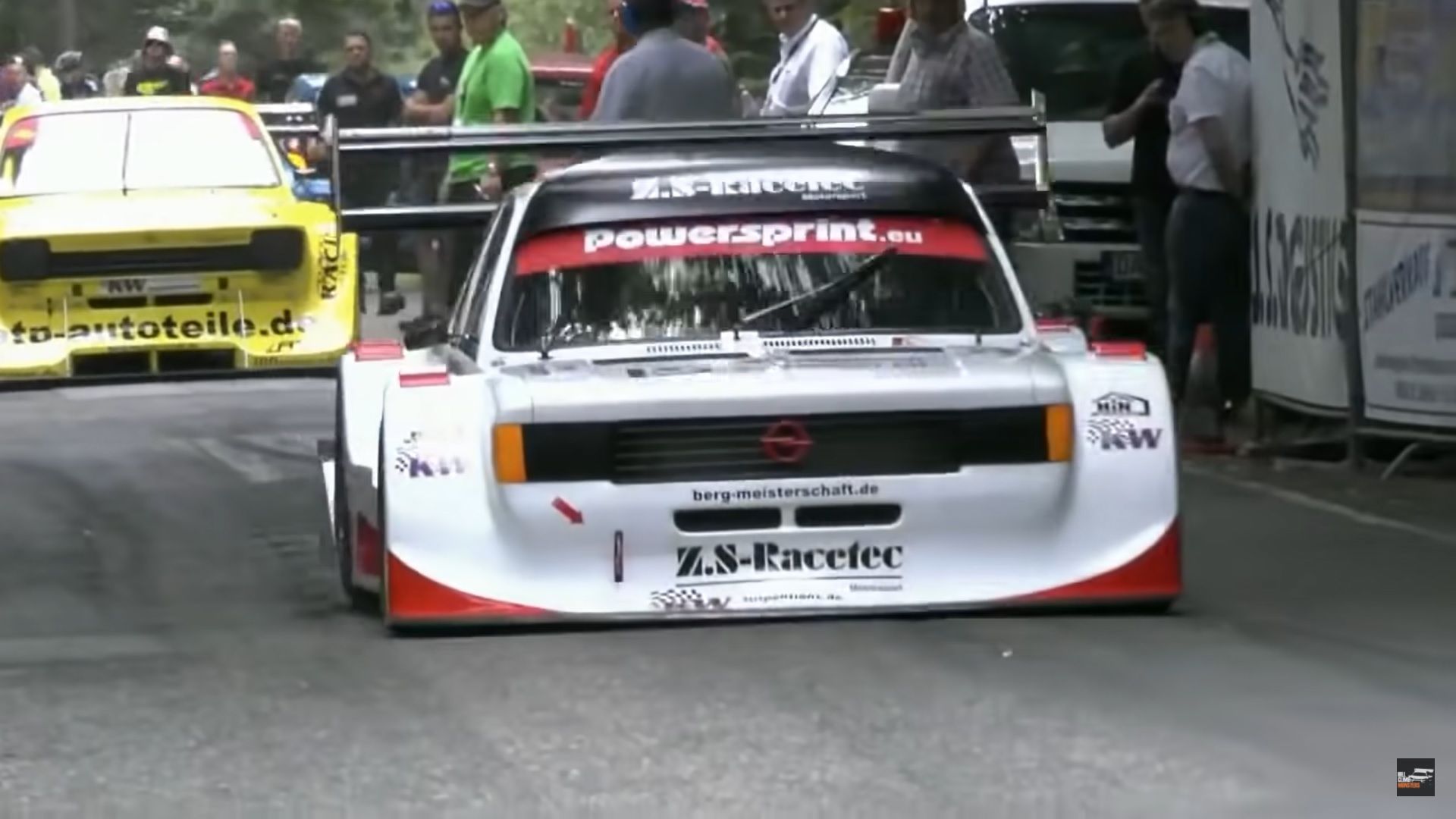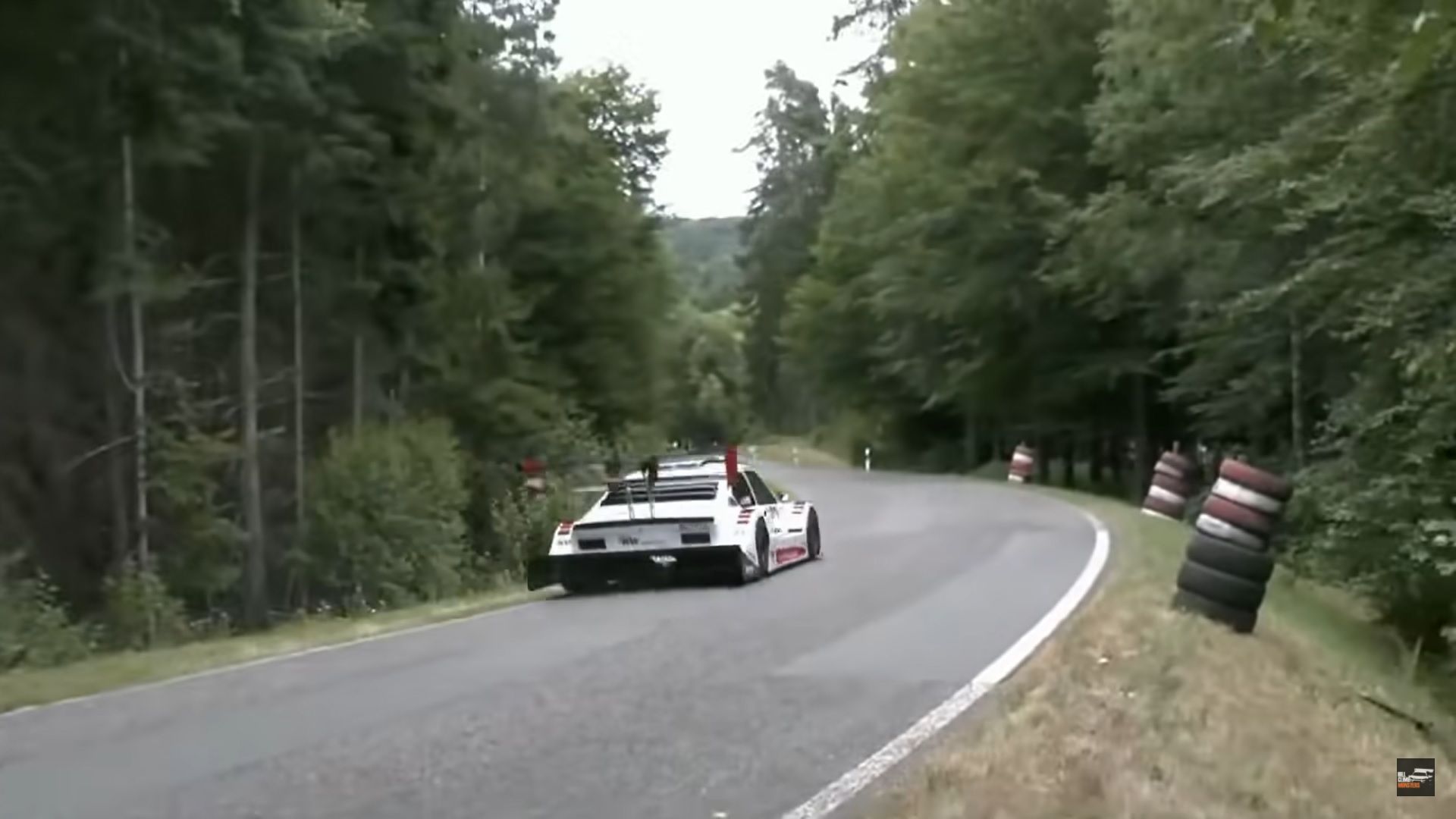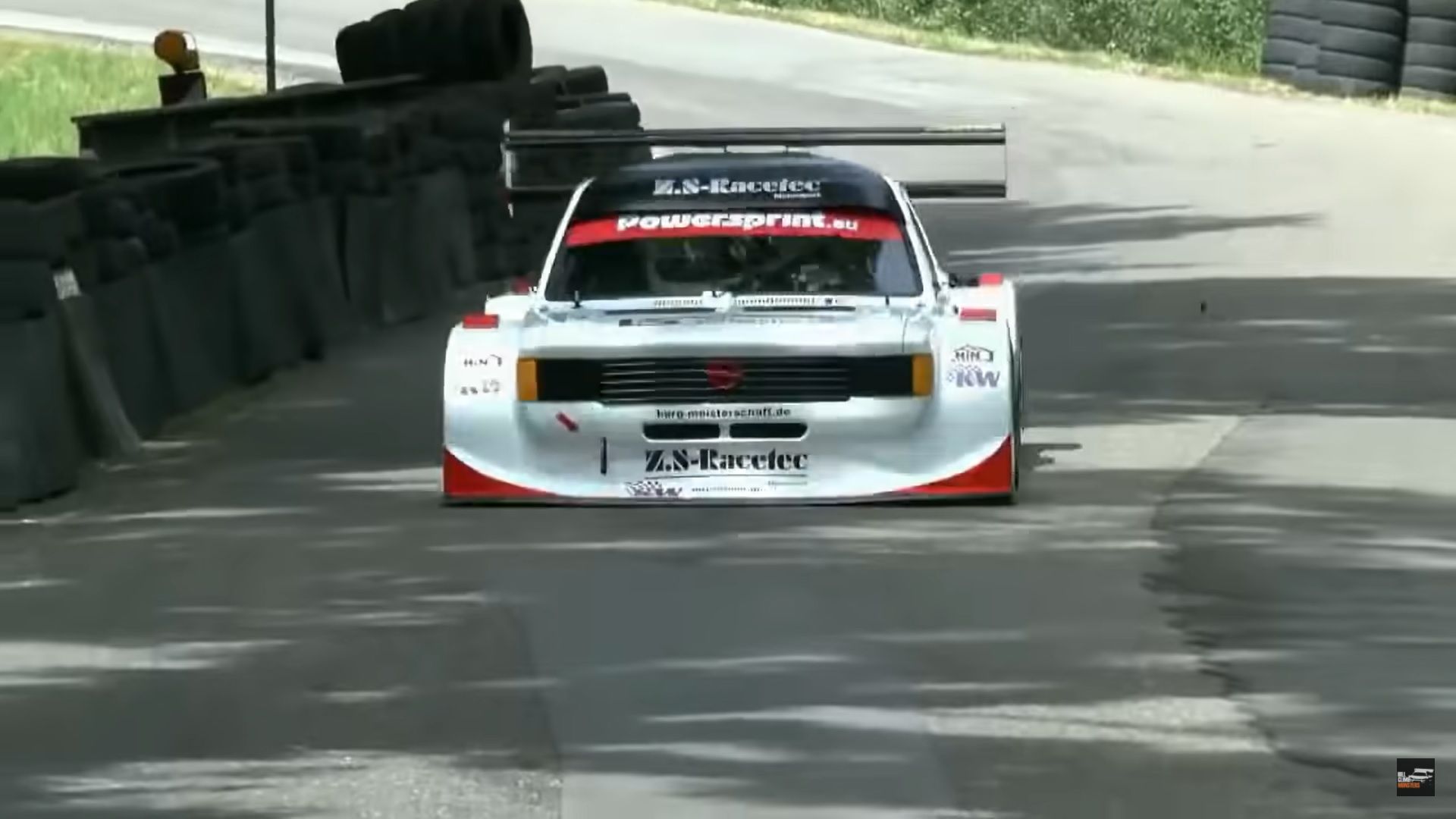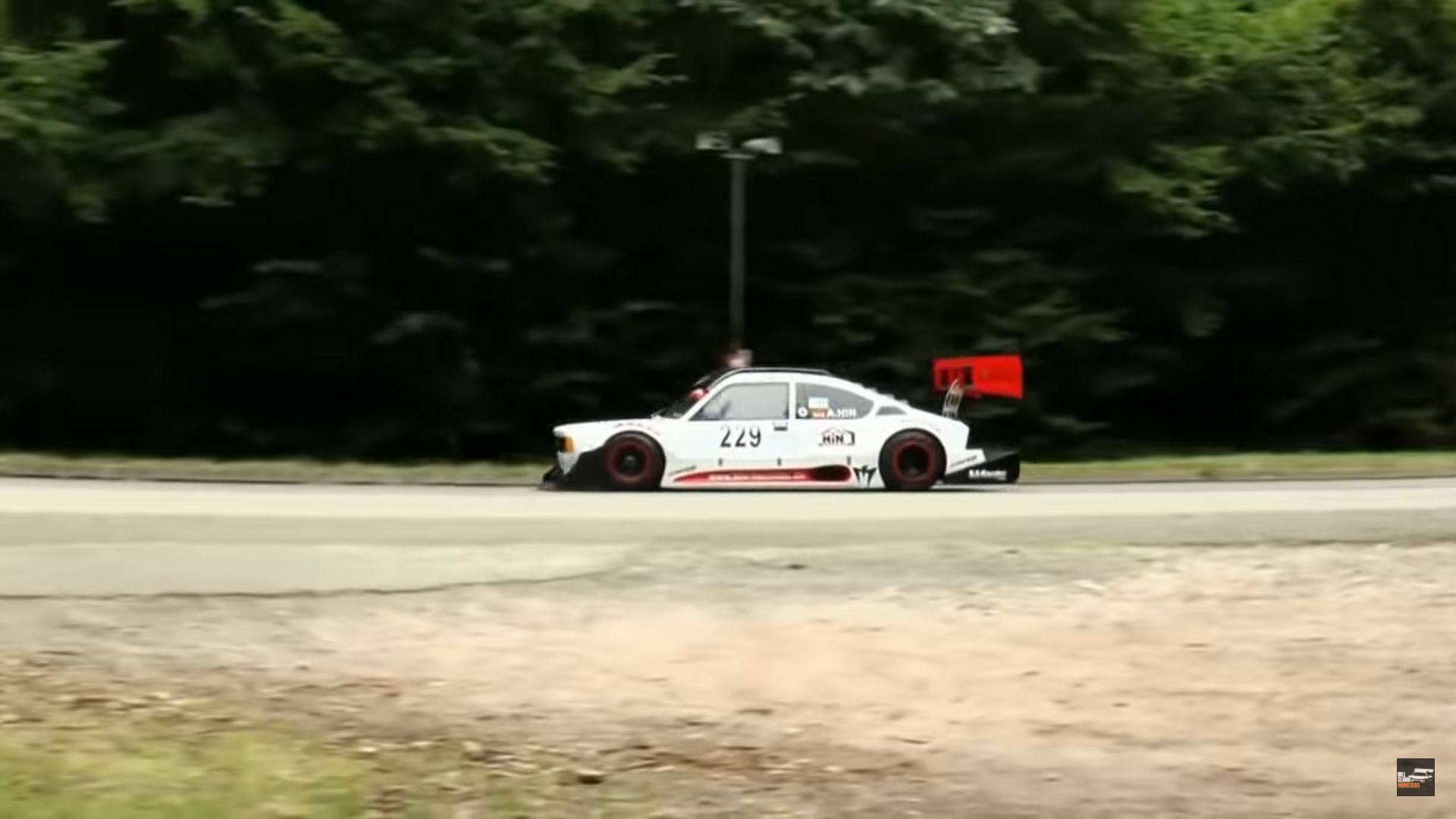Hillclimb racing is a discipline that can be easily described as 'rapid-fire motorsport'. You're the kind who doesn't have the patience to watch an entire Formula 1 Grand Prix or even a shorter MotoGP round? Hillclimb racing is for you since here you have the recipe for instant excitement packed in bite-sized chunks: there are ultra-fast cars looking like they come from the World Time Attack Challenge only here they have to tackle ultra-narrow mountain roads with no margin for error.
The surfaces are often bumpy and you basically only have two shots at getting it right each time around. Alexander Hin surely gets it right more often than not from behind the wheel of his low-slung Opel Kadett.
Hillclimb racing turns boring cars into awesome beasts
It barely weighed 2,000 pounds, seated four and with no engine bigger than the 2.0-liter four-pot in the adequately named 'Rallye' version, it was an antidote to anyone who was rushing to get from A to B. Opel never claimed that the Kadett was fast and, indeed, people buying it could care less about horsepower figures, 0-60 times, or top speed. They were in the market for a small, trust-worthy grocery-getter and the Kadett was just that.
Its mass appeal was further proven by the success of its siblings, the Chevy Chevette sold in Latin America, and the Isuzu Gemini sold in Japan. As an early case of successful brand engineering, the third-generation Kadett surpassed GM's very own 'T Car', the American Chevette, in terms of sales and it even found costumers in Australia (as the Holden Gemini), Korea (as the Daewoo Maepsy), and the U.K. (as the Vauxhall Chevette). Under the Opel badge alone, the Kadett C sold in over 1.7 million copies and its success was so big that, in fact, it was imported in the U.S. as the Buick–Opel.
With so many examples out there, it's no wonder that some ended up on the world's rally stages or road courses - and even drag strips!
What that means, however, is that heavy modifications are required to keep the Kadett relevant in the face of much newer and much more technologically advanced options.
Alexander Hin realized his Kadett C needed to go through a thorough overhaul if he were to compete at the sharp end of his category in European hill climb racing where there's at least one other heavily tuned Kadett C (you can see that yellow example right behind Hin's car at the start in the video).
This 3.2-liter unit equipped the E36-generation BMW M3 and in that application, it developed upwards of 295 horsepower and 239 pound-feet of torque. With a red line of 7,200 rpm (on European M3s), it was quite shouty from the get-go but Hin modified it extensively to the point that it now revs all the way to 11,000 rpm akin to a V-10-era F1 powerplant. The output is said to be at the tipping point of 400 horsepower which, apparently, is nowhere near enough since Hin has trialed a GM LS V-8 crate engine.
The bespoke frame hides underneath a ludicrous widebody featuring double dive planes in the front and a diffuser that extends beyond the edges of the already ultra-wide fender flares. The wing is insane in its own right with a two-story layout split by the wing's two support arms.
While the bulky lines of the Kadett C can still be visible, Hin's car is lightyears away from even the sportiest of all third-generation Kadetts, the 108 horsepower 'Rallye'. If you want to know how all those mods come together, check the video below shot at a German hill climb event that surely annoyed the local wildlife - but all the noise surely doesn't annoy us!





